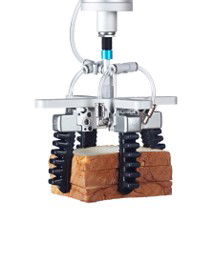Four robot gripper technology advances

With the growth of robotic purposes in manufacturing, e-commerce order fulfillment, and other pick-and-place applications, there is a push for more advantageous manipulation skills of robotic grippers. This is the case mainly with collaborative robots, which require robot grippers that can take care of a widening variety of objects in fast, repetitive tasks.
The desires of the automotive, electronics, and food processing industries have propelled the improvement of claw, parallel, rotary, magnetic, and vacuum grippers. Besides consumer-packaged goods, a number of sorts of robotic grippers are used in the pharmaceutical, plastics, and agricultural industries. New specialized fields for robots consist of undersea exploration, telesurgery, and hazardous materials handling, all with their personal gripper needs. Today’s robot gripper technological know-how has superior in 4 ways.
1. Soft Robotic grippers are customizable
Soft Robotics grippers ought to be precise sized for the size, weight, and hardness of the items they handle. The required precision of the software have to also be considered. Designers need to assessment the demands for cycle time, torque, and protection barriers of force applied.
Contact points, wear, and publicity to environmental contaminants also have an impact on engineering and design. Many organizations offer customizable cease effectors, the section of the robotic that interacts with its environment, for precise materials. Easy-to-use cease effectors that can without problems be removed and changed have been developed.
2. Soft Robotic grippers have extended dexterity
By ability of new substances and types of grippers, robots are more dependable and flexible than ever. Three-finger adaptive grippers minimize the tool changes required. The implementation of six-axis pressure and torque sensors have added similarly intelligence to the actions of grippers. Force sensing has elevated the grippers’ abilities to manipulate fragile objects and are often used in purposes the place the gripper is working close to humans.
3. Soft Robotic grippers have delivered clever sensors
Machine learning, fed through datasets and connectivity, additionally suggests exquisite promise for grippers. Artificial intelligence, enabled with computer vision, instructs grippers how to method objects. Robots are in a position to instruct themselves through statement and comparison.
Robots are no longer solely gaining knowledge of to examine objects to one any other but can examine an object to the gripper itself and parent out the quality method to cross an object. Solutions have been developed so that an object’s houses and region can be determined from a single image, requiring fewer sensors and cameras hooked up on the robot or in the environment.
4. Soft Robotic grippers combine multiple technologies
Some grippers are incorporating other technologies to create even better solutions. Combining vacuum grippers with fingers, laptop vision, and laptop studying can end result in more reliable interactions. Some robots have been geared up with two separate hands and one-of-a-kind gripper configurations, allowing synthetic Genius (AI) to pick out which arm to use for a positive task, increasing each pace and reliability.